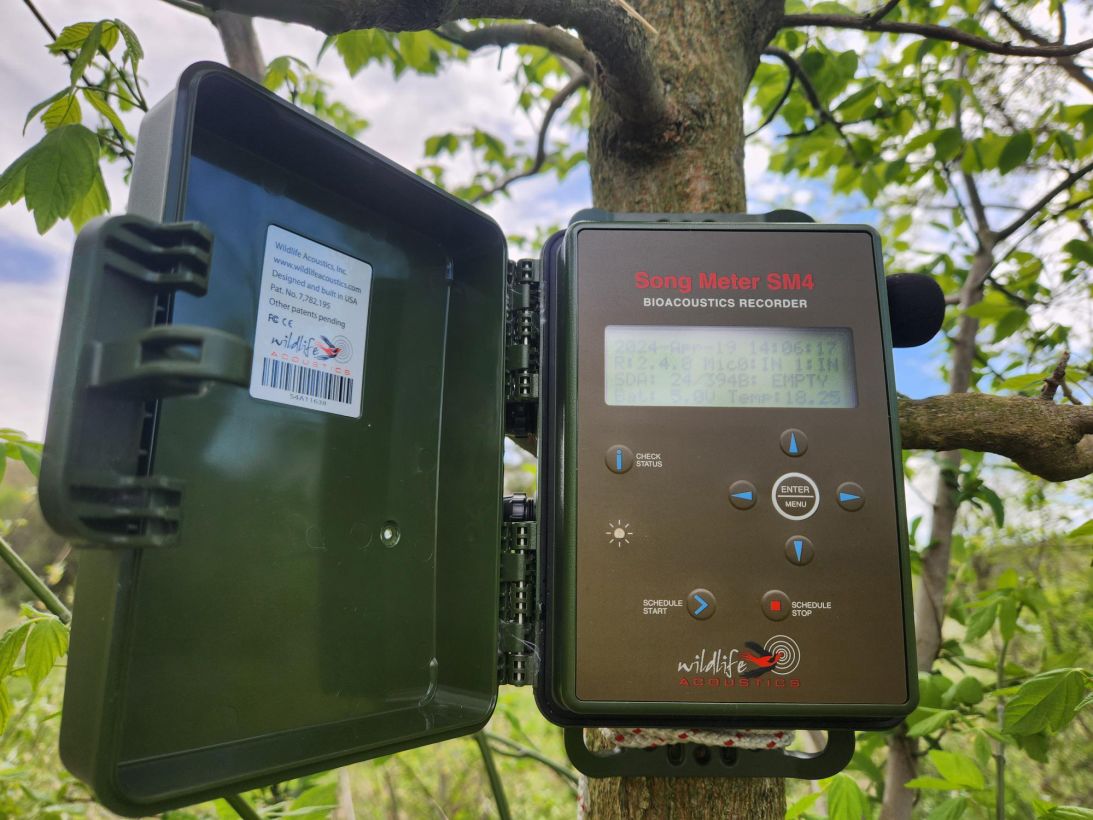Science
Total Solar Eclipse Triggers Unique Bird Behavior Across North America

The total solar eclipse on April 8, 2024, caused some bird species across North America to exhibit unusual behaviors, temporarily resetting their biological clocks. This phenomenon occurred as the moon obscured the sun, plunging areas from Mazatlán, Mexico, to St. Johns, Newfoundland, into darkness for a brief period. Research published in the journal Science noted that 29 bird species began to sing as if dawn had arrived, providing a unique opportunity to study the impact of sudden light changes on avian behavior.
The study leveraged observations from citizen scientists along the eclipse path, enabling a broad analysis of how birds reacted to the temporary darkness. This event allowed researchers to investigate an aspect of animal behavior that is often difficult to replicate in laboratory settings. According to lead author Liz Aguilar, a doctoral student at Indiana University Bloomington, the eclipse presented an exceptional natural experiment to assess how birds respond to abrupt changes in light.
“Light is one of the most powerful forces shaping bird behavior,” Aguilar explained. “Even a four-minute ‘night’ was enough for many species to act as if it were morning again.” This sensitivity to light has significant implications for understanding how birds might cope with issues such as light pollution and artificial lighting at night.
Citizen Science Captures Bird Reactions
During a similar eclipse in 2017, scientists observed various animal reactions at zoos, noting that some birds returned to roost while nocturnal species became more active. However, Aguilar and her team aimed to specifically document the responses of wild bird species during the 2024 eclipse, occurring at a time when birds were actively singing to attract mates and defend territories.
The eclipse’s totality lasted approximately four minutes and 15 seconds in locations like Bloomington, Indiana. To enhance public engagement and document animal behavior, the research team developed a smartphone app called SolarBird. “Community scientists were absolutely essential to this project,” Aguilar emphasized. The app enabled nearly 11,000 observations from over 1,700 users, capturing bird behaviors across a distance of 3,106 miles (5,000 kilometers) during the eclipse.
In addition to the app, the team deployed recorders throughout southern Indiana to capture an estimated 100,000 bird vocalizations before, during, and after the eclipse. Users were tasked with observing birds and documenting whether they were singing, flying, or engaged in other activities.
“As we looked at the database that night, we saw the community had also worked its magic,” said Dr. Paul Macklin, an associate professor at Indiana University Bloomington. “The sheer volume of data collected provided invaluable insights into bird behavior during this rare event.”
Documenting Diverse Bird Responses
The data collected during the eclipse was analyzed using BirdNET, an artificial intelligence system designed to identify bird species based on their calls. Of the 52 bird species active during the eclipse, 29 exhibited notable changes in their vocalizations. The study revealed that as darkness fell, 11 species sang more than usual, while the return of sunlight prompted 19 species to engage in what researchers termed a “false dawn chorus.”
For instance, barred owls called out four times more frequently than normal, and robins sang at six times their typical rate. Aguilar noted that for these birds, the sunlight’s return signaled the start of a new day, effectively resetting their internal clocks. “Different bird species greet the dawn in very different ways,” she explained, highlighting that those with the most elaborate dawn choruses were also the most responsive to the eclipse.
While the study did not measure long-term effects, the researchers speculate that the time spent reacting to the darkness could have implications for foraging, mating, or territory defense. Bird responses varied, with the most pronounced reactions occurring in the areas where totality was observed.
Aguilar noted, “Not all species reacted the same way. Birds differ in their sensitivity to light changes, and each species has its own activity patterns and sensory abilities,” which influence how they interpret environmental shifts.
The importance of validating the AI detections was emphasized by Dr. Stefan Kahl, lead of BirdNET Technology at Cornell University. Although Kahl did not participate in this particular study, he has been involved in research related to bird behavior during eclipses. He affirmed that while AI can make mistakes, the systematic nature of these errors allows researchers to observe genuine differences in vocal activity.
Dr. Andrew Farnsworth, a visiting scientist at the Cornell Lab of Ornithology, has studied bird behavior during prior eclipses. He praised the innovative crowdsourcing approach employed in this latest research. “Understanding how organisms perceive and respond to their environment is crucial for studying behavioral evolution,” he said.
As light pollution continues to increase, understanding which bird species are most affected by changes in light could be vital for conservation efforts. Recent studies have indicated that artificial light can disrupt birds’ natural rhythms, causing them to vocalize longer and potentially leading to disorientation during migration, resulting in fatal collisions with buildings.
Aguilar highlighted the significance of identifying the species most impacted by light pollution. “This knowledge can help focus conservation efforts where they are needed most,” she concluded.
-

 Technology4 months ago
Technology4 months agoDiscover the Top 10 Calorie Counting Apps of 2025
-

 Health2 months ago
Health2 months agoBella Hadid Shares Health Update After Treatment for Lyme Disease
-

 Health3 months ago
Health3 months agoErin Bates Shares Recovery Update Following Sepsis Complications
-

 Technology3 weeks ago
Technology3 weeks agoDiscover 2025’s Top GPUs for Exceptional 4K Gaming Performance
-

 Technology2 months ago
Technology2 months agoElectric Moto Influencer Surronster Arrested in Tijuana
-

 Technology4 months ago
Technology4 months agoDiscover How to Reverse Image Search Using ChatGPT Effortlessly
-

 Technology4 months ago
Technology4 months agoMeta Initiates $60B AI Data Center Expansion, Starting in Ohio
-

 Technology4 months ago
Technology4 months agoRecovering a Suspended TikTok Account: A Step-by-Step Guide
-

 Health4 months ago
Health4 months agoTested: Rab Firewall Mountain Jacket Survives Harsh Conditions
-

 Lifestyle4 months ago
Lifestyle4 months agoBelton Family Reunites After Daughter Survives Hill Country Floods
-

 Technology3 months ago
Technology3 months agoUncovering the Top Five Most Challenging Motorcycles to Ride
-

 Technology4 weeks ago
Technology4 weeks agoDiscover the Best Wireless Earbuds for Every Lifestyle





















